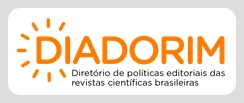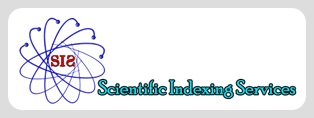Learning and educating with ecological ink: a tutorial teaching practice in the Serra do Espinhaço
DOI:
https://doi.org/10.70597/ijget.v1i1.364Palavras-chave:
Sustainability, Ecological Inks, University ExtensionResumo
The present work is an extension project developed by the Tutorial Education Program (PET) - Strategies to reduce the retention and dropout of academics at UFVJM. This project aimed to develop and teach the lay population in the Diamantina region to produce ecological, inexpensive and efficient paints, from the sieved soil under dilution with water and PVA - Polyvinyl Acetate glue, in order to use them to paint facades of houses and buildings of poor families or communities present in the locality. Therefore, for the performance of the project, volunteer students were selected who had an academic performance coefficient (CRA) of less than 60 or with one or more failures in subjects, in order to meet the purposes of this PET group, combating retention and evasion. During the project, the volunteer team was monitored for the performance of CRA, trained in the production of paints and in the promotion of workshops in educational institutions, which brought up issues inherent to environmental education and the production and viability of ecological paints. The project contributed to the exchange of experiences and bonds between the external and academic community, through technical visits and offered workshops.
Referências
Azevedo, G.H. e Vital, A.F.M., 2018. Aproveitamento do rejeito das indústrias de beneficiamento do caulim para a produção de tinta ecológica à base de terra. Tecnol. Metal. Mater. Miner., São Paulo, 15(3), pp.242-247. [online] Disponível em: <https://www.tecnologiammm.com.br/article/10.4322/2176-1523.14 29/pdf/tmm-15-3-242.pdf>. [Acessado 26 de março de 2020].
Carneiro, J.J. e Dias, R.Q., 2015. Projeto cores da terra: potencial da tinta de solo para a extensão rural. ISBN 978-950-34-1265-7. In: Memorias del V Congreso Latinoamericano de Agroecología. Argentina. pp.1-4. [online] Disponível em: <http://sedici.unlp.edu.ar/bitstream/handle/10915/55007/Documento_completo.pdf-PDFA.pdf?sequence=1&isAllowed=y>. [Acessado 26 de março de 2020].
Carvalho, A.F. (coord.), 2009. Cores da terra: fazendo tinta com terra!. Viçosa: UFV, DPS.
Embrapa – Empresa Brasileira de Pesquisa Agropecuária, 2010. Educação ambiental tendo o solo como material didático: pintura com tinta de solo e colagem de solo sobre superfícies. Rio de Janeiro: EMBRAPA.
Fórum de Pró-reitores das Instituições de Educação Superior Brasileiras, 2012. Política Nacional de Extensão Universitária. Manaus. [online] Disponível em: <https://proex.ufsc.br/files/2016/04/Pol%C3%ADtica-Nacional-de-Extens%C3%A3o-Universit%C3%A1ria-e-book.pdf>. [Acessado 26 de março de 2020].
Góis, L. e Miranda, Z.C., 2016. TINTAS DA TERRA: O uso dos pigmentos naturais para uma pintura sustentável. UFSJ. São João Del Rei. [online] Disponível em: <https://www.ufsj.edu.br/portal2-repositorio/File/artes/IC_TINTAS_DA_TERRA.pdf>. [Acessado 26 de março de 2020].
Júnior, S.D.S. e Costa, F.J., 2014. Mensuração e Escalas de Verificação: uma Análise Comparativa das Escalas de Likert e Phrase Completion. ISSN 2177-3866. In: XVII Seminários em Administração (SemeAd). pp.1-15. [online] Disponível em: <http://sistema.semead.com.br/17semead/resultado/trabalhosPDF/1012.pdf>. [Acessado 30 de março de 2020].
Ministério da Educação, 2006. Programa de Educação Tutorial-PET. Manual de Orientações básicas. Brasília.
Valle, C.E., 1995. Qualidade Ambiental Iso 14000: O desafio de ser competitivo protegendo o meio ambiente. 2 ed. São Paulo: Pioneira.
Vione, G.F., 2002. Metodologias participativas na construção de planos de desenvolvimento local. Curso de Pós-Graduação em Desenvolvimento, Agricultura e Sociedade. UFRRJ. Rio de Janeiro. [online] Disponível em: <http://www.emater.tche.br/site/arquivos_pdf/teses/Mono_Gilmar_Vione.pdf>. [Acessado 26 de março de 2020].
Downloads
Publicado
Como Citar
Edição
Seção
Licença
Copyright (c) 2020 International Journal of Geoscience, Engineering and Technology

Este trabalho está licenciado sob uma licença Creative Commons Attribution-NonCommercial-ShareAlike 4.0 International License.
All articles published in this journal are licensed under a Creative Commons Attribution-NonCommercial-ShareAlike 4.0 International.










